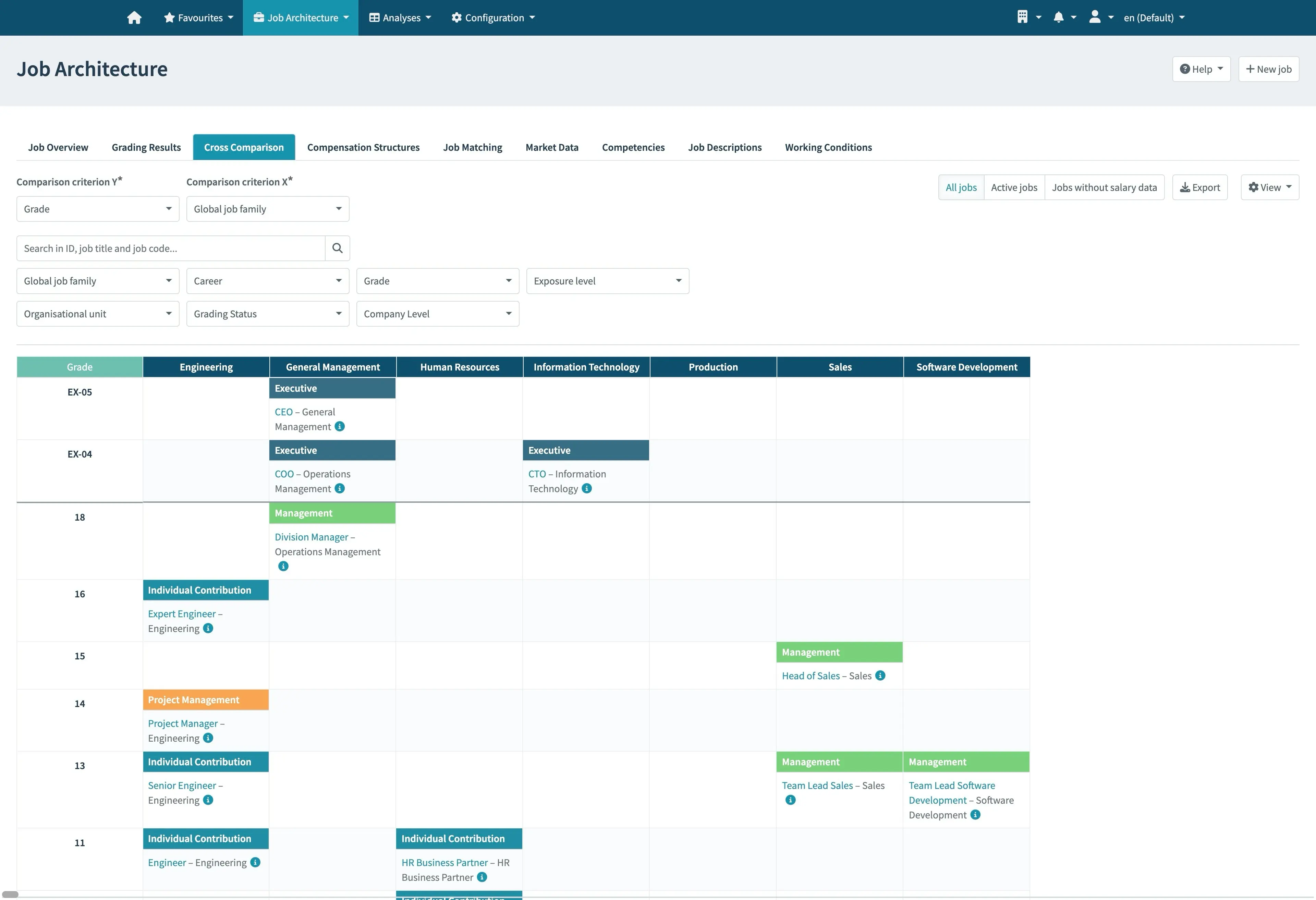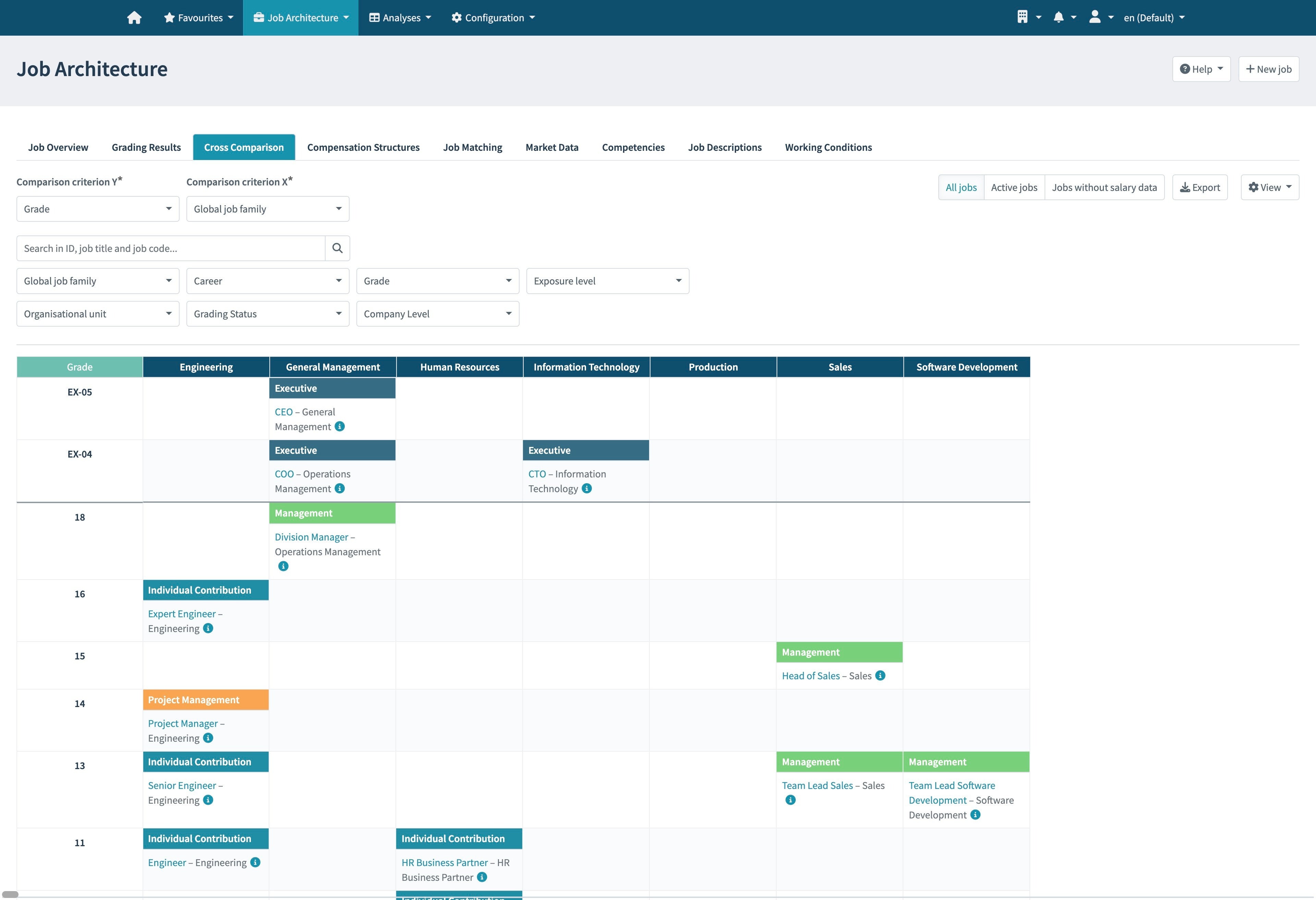
1. Organisational Analysis
A robust job architecture (JA) should be based on your organisation’s specific needs, structure and philosophy - so the first stage of any successful JA project is a detailed organisational analysis that answers the following questions:
- How is the organisation structured?
- Which departments are in the company?
- Which roles make up each individual function?
- How many career levels do you want?
- What is your organisation's pay philosophy?
- What does your organisation want to achieve?
By gathering this information, you give yourself the best chance of understanding the organisation and putting a meaningful job architecture in place (as opposed to implementing an inconsistent structure that won’t defend against equal pay claims!)
For more information on gradar’s job architecture management solution, check out this video: https://www.youtube.com/watch?v=792-CFaBfio
2. Job Evaluation
After the organisational analysis, you’ll have clearly defined the roles and responsibilities of each job, crucial for the second phase of the project - job evaluation.
With the introduction of the EU Pay Directive, the principle of pay transparency is no longer a recommendation - it’s a legal requirement. Companies now need to have an objective method of comparing the value of work. In other words, job grading!
gradar is an affordable, accessible software that supports your organisation with the job evaluation process - analysing each role in your workplace through our detailed grading system and compliant point-factor-based method.
Through this process, you’ll define the job level and determine the relative value of each job within the organisation. You can then view each job in a real-time cross comparison based on its grade - the perfect starting point for a job architecture map.
To assist with recruitment, talent management and succession planning, gradar will also deliver an instant translation of your job grading results into seven job family and grade-specific competencies.
We've even put together a guide to grading your first job: https://www.youtube.com/watch?v=XlxLg2C5stk
3. Compensation Structuring
Based on job-evaluation results, your organisation should perform pay analytics to help structure effective remuneration systems - a hugely important next step for building your job architecture and effectively implementing your pay philosophy.
The gradar system can be used to do this automatically - just upload pseudonymised employee data to instantly generate a compensation analysis graph showing a distribution of salaries by grade.
With this information - and the ability to see each individual role and its salary - your organisation can get a clear overview of its internal pay practices, viewing outliers above and below any pay bands built into the system.
From there, it’s an ongoing process to optimise your pay through discussions with management and regular analysis of your compensation structures.
To see gradar’s compensation structuring in action, take a look at this short demo: https://www.youtube.com/watch?v=hSLli4ER844
4. Further Integration Possibilities
While job evaluation and compensation structuring are part of any successful job architecture project, other elements are also taken into account - including market benchmarking and equal pay analysis.
For market benchmarking, the gradar system converts job grading results into benchmark job codes and uses a smart dashboard to run analysis against market rates and help set your salaries at the right level.
For equal pay analysis, our partner Sysarb can use gradar job grades to deliver a deep-dive analysis of your internal salaries - dealing with any issues around pay equity and ensuring your organisation is fully compliant with rules and regulations in your location.
Watch this video for a full breakdown of gradar’s market benchmarking approach: https://www.youtube.com/watch?v=c0U7n7xX5gQ&t
Conclusion
It’s important not to underestimate the power of a job architecture project within your organisation - especially given emerging pay transparency legislation.
This is a change management process that will have an ongoing impact on your workplace, so it’s important to include management and trade unions in certain steps and keep employees regularly updated along the journey.
To ensure you follow the right approach for your organisation (and ensure compliance with the EU Pay Directive!) working with digital tech solutions like gradar can make a positive difference.
We've confirmed our commitment to pay transparency and creating equitable compensation structures - and we can help you achieve the same for your workplace.



